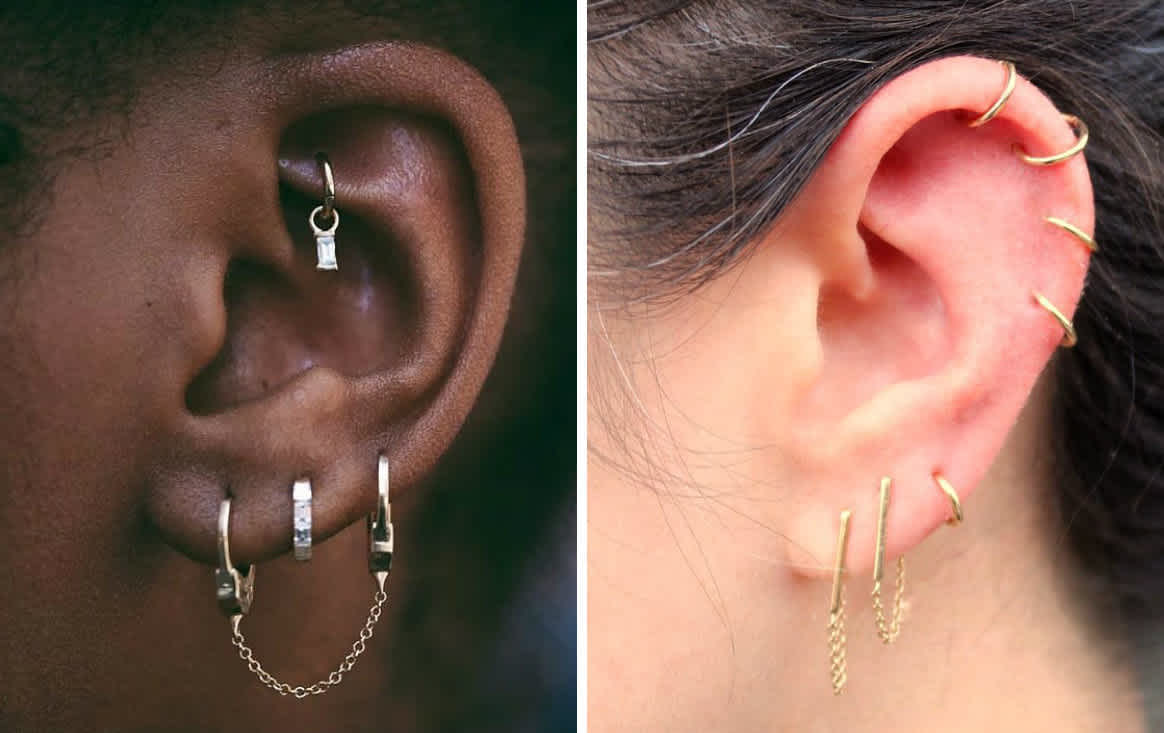
Piercing is a beauty marketer. It is a remedy for controlling diseases. If handled with care, piercing is an excellent strategy to practice,
Body
Definitions of Piercing:
Piercing has different meanings depending on whether one uses it as an adjective or a noun.
As an adjective, piercing refers to five meanings, as in:
- Looking steadily and penetratingly with piercing azure eyes.
- Making a shrill, ear-splittingly loud noise, or screaming
- Noisy razor-sharp piercing comments.
- Intensely sensitive, logical, or piercing intelligence.
- Triggering discomfort, specifically because of icy cold piercing windy weather.
As a noun it is,
- The skill or exercise of puncturing a hole with a sharp pointy object in body parts to insert jewellery such as rings.
- An illustration of holing of body parts to create spaces to hold press-studs and other beautiful decorations. Inflicting sharp discomfort keenly and painfully felt by the individual desiring to have a hole in a particular place on the body for a beautiful presentation.
Piercing methods:
Body piercings, done in a variety of ways, explained below:
- Body piercing – These cut across the nostril, tongue, belly button, multiple ear cartilage.
- Nose piercing – Stud, double hoop, heal a nose, nose piercing, done to the nose.
- Ear piercing is:
Puncturing a hole or holes around the lobes of ears, using sterilized needles for earrings fastened. People puncture their earlobes for diverse motives. These range from divine aims, for expressiveness, for erotic desire while some for artistic worth. Many follow their beliefs or reverse them. Migraine, anxiety, and other symptoms experienced by those who have daith piercing done on the innermost folding of the ears. According to studies, daith piercing performed in the same locations where acupuncturists use it alleviates migraine and anxiety symptoms. Daith piercing causes pain and takes over four months to heal.
- Eyes piercing:
Eye piercing is in many types, such as Vertical, Bridge, Horizontal, Multiple, and Anti-eyebrow piercing.
Practices of after-care In Piercing
- After-caring practices do not screw or rotate jewels in your body to hasten to heal. Avoid handling your piercing except after thoroughly washing your hands.
- On no occasion should you use detergent or alcohol-based cleansers to avoid eliminating good bacteria for healing? Use Aftercare piercing oils, sprays, and solutions.
- Tree oil tea with antimicrobial, sterile, and anti-inflammatory things cause a threefold danger in penetrating aftercare.
- Use early in the curative process and continue to avert irritation and contamination. Almond or coconut oil commended for use during the first two months.
- Packed disinfected saline is a mild choice for intense home care, particularly in wound wash-down. Piercing aftercare H2Ocean 1.5 Fluid Ounces Spray
- Avoid petroleum as it stops oxygen from circulating in pierced body parts and permits microorganisms to breed.
Conclusion: There are diverse kinds of piercings with different ways of healing. Healing varies from person to person, depending on their immunity. The piercer should always treat each case differently and care for the clients well Tattoo Fall.
